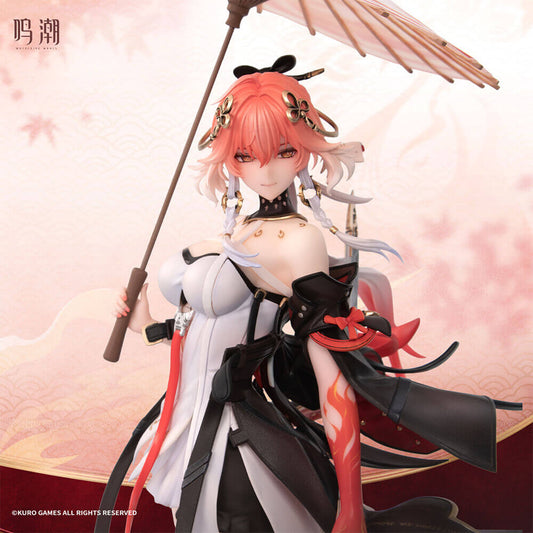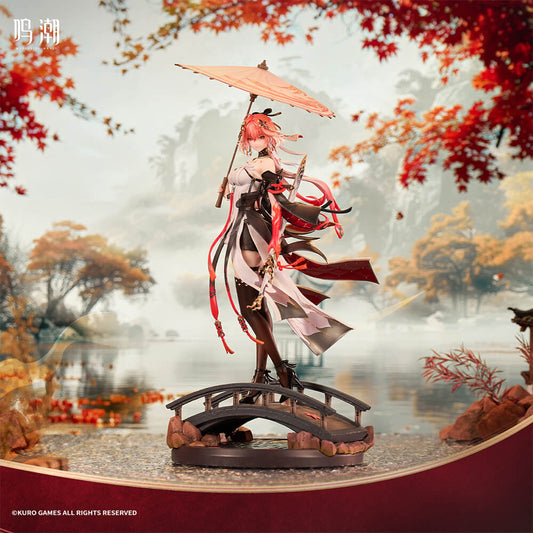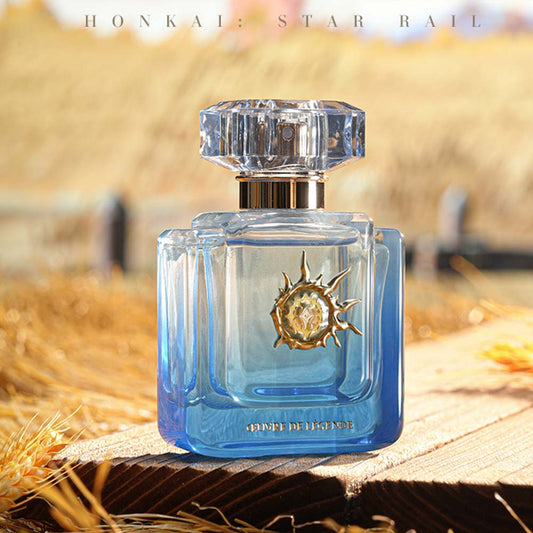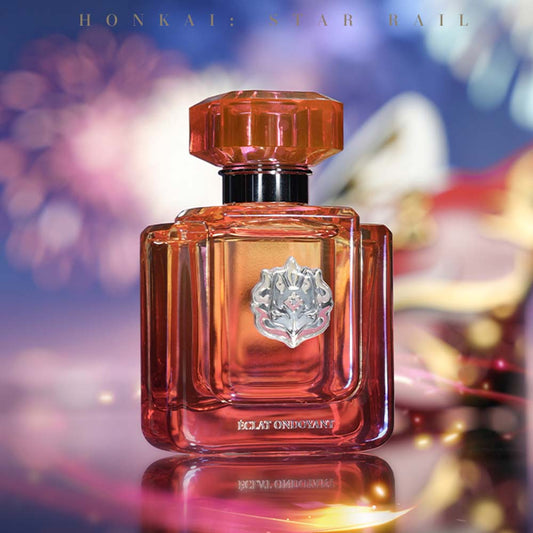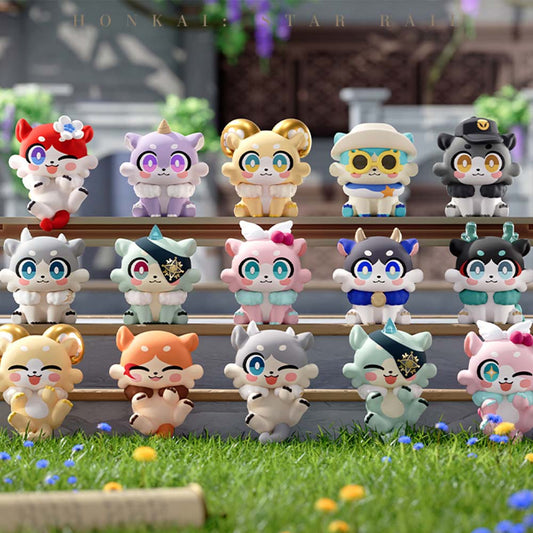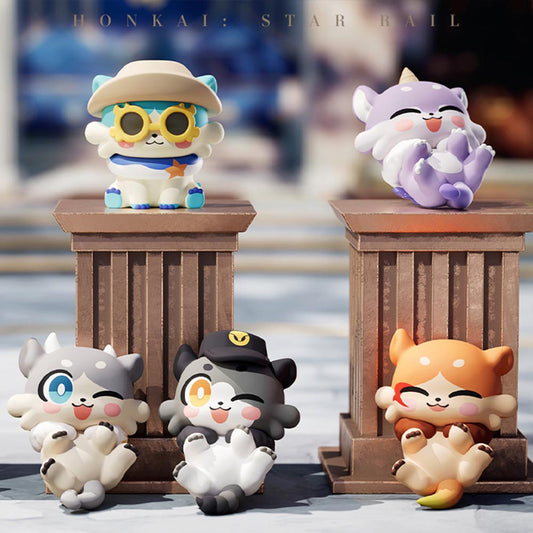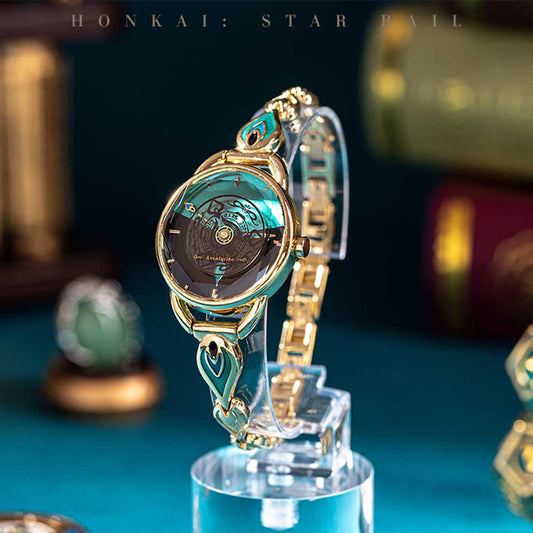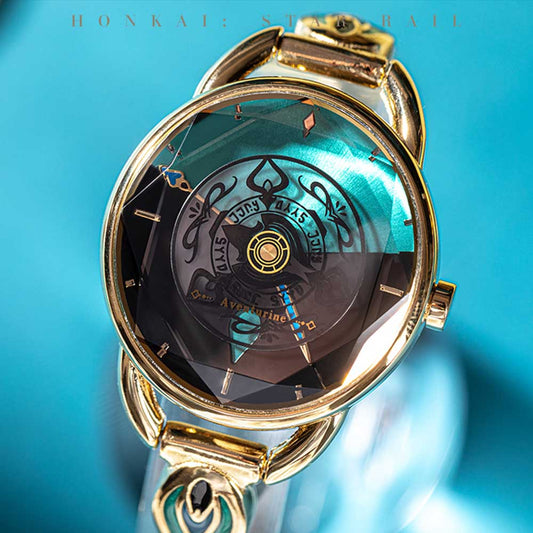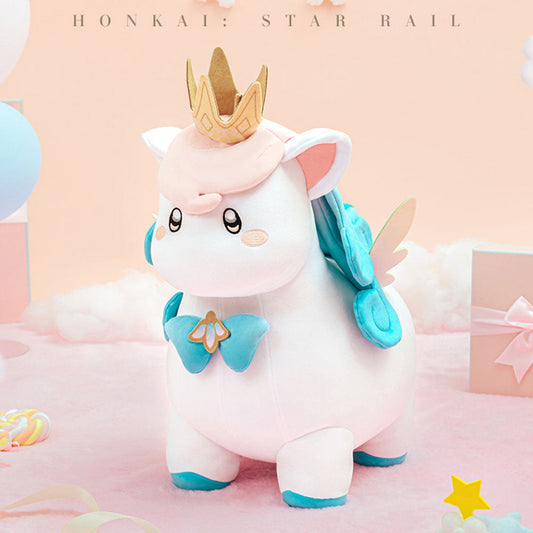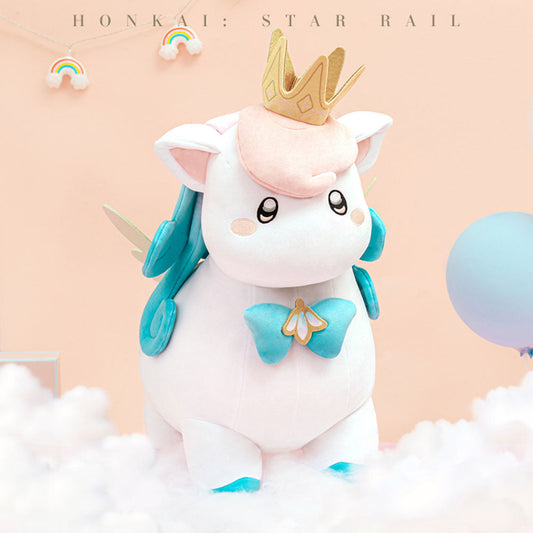A Beginner's Guide to Understanding Figure Scales (1/7, 1/8, etc.)

When you see figure scales like 1/7 or 1/8, it shows a ratio. This ratio tells you how much smaller the figure is than the real character. For example, if a character is 160 cm tall, a 1/8 scale figure would be 20 cm tall.
Scale in action figures means the ratio of the figure’s size to the real-life object or character it copies.
Knowing these scales helps you choose the right size for your shelf. It also makes collecting figures easier. This Beginner's Guide will help you feel sure when picking figures.
Beginner's Guide to Figure Scales
What Is a Figure Scale?
When you see a figure, you might wonder about its size. A figure scale tells you how big the figure is compared to the real character. It shows the ratio between the figure and the real person or object. For example, a 1/8 scale means the figure is one-eighth as big as the real thing. This helps you know the figure’s size before you buy it.
Manufacturers use figure scales to keep sizes the same. They want you to know what size to expect. You can use this to plan your collection or pick figures for your shelf. If you read this Beginner's Guide, you will start to see these numbers everywhere in the figure world.
Tip: Always look at the scale before you buy a figure. This helps you avoid surprises when your package comes!
Scale Ratios Explained
You might see numbers like 1/7, 1/8, or 1/12 on figure boxes. These are called scale ratios. They show how many times smaller the figure is than the real version. For example, a 1/8 scale figure is eight times smaller than the real character. If the character is 160 cm tall, the figure will be 20 cm tall.
Manufacturers pick these ratios for some reasons:
-
The ratio scale gives you clear details about the figure’s size.
-
It uses a true zero, so you can measure from nothing to full size.
-
You can use the ratio to find average figure height or compare figures.
Here’s a table to help you see what makes a ratio scale special:
|
Characteristic |
Description |
|---|---|
|
Detailed Information |
Lets you find averages and other facts. |
|
True Zero Value |
Shows when there is none of the thing measured. |
|
Other Scale Characteristics |
Includes labels, order, and differences you can measure between figures. |
You may notice figure scale standards change by where the figure comes from. For example, a 15 mm figure in a fantasy set might not match a 15 mm figure in a sports set. This happens because different places and companies use different heights for their characters. So, even if the numbers look the same, the real size can be different. This Beginner's Guide from Bahomu helps you spot these changes and make better choices.
Remember: Always check what the maker uses as the "real" height. It can be different for each brand or region.
Scale Calculation
Calculation Formula
You might wonder how to figure out the height of a collectible figure just by looking at the scale ratio. It’s actually pretty simple! The scale ratio tells you how much smaller the figure is compared to the real character. For example, a 1/8 scale means the figure is one-eighth the size of the original.
Here’s a quick formula you can use:
Figure Height = Original Height ÷ Scale NumberLet’s break it down with a table:
|
Original Height (cm) |
Scale Number |
Figure Height (cm) |
|---|---|---|
|
160 |
8 |
20 |
|
180 |
7 |
25.7 |
|
150 |
6 |
25 |
You just take the real height of the character and divide it by the scale number. That’s it! This formula works for any scale, whether you’re looking at anime figures, action figures, or even model cars.
Tip: Always check the original height used by the manufacturer. Sometimes, different brands use different heights for the same character.
Example Calculation
Let’s walk through a real example together. Imagine you want a figure of a character who stands 180 cm tall in the story. You find a 1/8 scale figure of this character. How tall will the figure be?
-
Start with the character’s real height: 180 cm.
-
Look at the scale: 1/8 (so the scale number is 8).
-
Use the formula:
Figure Height = 180 cm ÷ 8 = 22.5 cm
So, your 1/8 scale figure will stand about 22.5 cm tall. Pretty cool, right?
You can use this method for any scale. If you see a 1/12 scale, just divide the original height by 12. This makes it easy to compare figures and plan your display.
Here’s a quick table to help you see how different scales affect the look and feel of your collection:
|
Scale Ratio |
Impact on Appearance and Detail |
|---|---|
|
1:6 |
Creates a dynamic gallery effect but may overwhelm small spaces. |
|
1:12 |
Offers a balance of detail and size, popular for customization and scene creation. |
|
1:18 |
Keeps displays tidy and allows for a multi-thematic approach without clutter. |
-
Larger scales give you more detail, but they might need custom accessories.
-
Smaller scales like 1:12 are great for mixing and matching accessories.
-
Keeping your collection in the same scale helps your display look more realistic and organized.
If you’re just starting out, this Beginner's Guide will help you feel confident when picking your first figures. You’ll know exactly what to expect when your new collectible arrives!
Common Scales
Popular Scale Sizes
When you start collecting, you’ll notice some figure scales pop up more than others. These popular sizes make it easy to find figures, accessories, and even display cases. Here’s a quick look at some of the most common scales and what you’ll usually find in each:
|
Scale Size |
Typical Dimensions |
Common Uses |
|---|---|---|
|
1:35 |
8.7 mm |
Military models, armored vehicles |
|
1:32 |
9.5 mm |
Model railways, aircraft, soldiers |
|
1:28 |
10.9 mm |
Biplane fighters, die-cast cars |
You might also see 1/72 and 1/48 scales a lot. Many model builders love 1/72 because you can find so many different subjects, like planes, tanks, and ships. The 1/48 scale is another favorite. It gives you a nice balance between detail and size, and you’ll find lots of extra decals and accessories for it.
Tip: If you want to build a collection with lots of variety, try starting with a popular scale. You’ll have more choices and it’s easier to find matching pieces.
Size Comparison
Choosing between large and small scales can feel tricky. Larger figures look amazing and really stand out on your shelf. They show off more detail and can make your display feel like a mini gallery. But they take up more space, so you might run out of room fast. Moving them around can also be tough if you like to change your setup.
Smaller scales fit better on small shelves or tables. You can create bigger scenes or formations without using up all your space. These figures are great for wargaming or building detailed dioramas. However, they might not have as much detail, and sometimes they don’t have as many accessories.
-
Large scales give you more detail and a bigger visual impact.
-
Small scales let you fit more figures in less space and make creative displays.
-
Some collectors mix scales to keep things interesting, but sticking to one scale can make your collection look more organized.
Over time, trends have changed. Collectors often pick 1/72 for the huge variety, while 1/48 has become more popular because of the extra detail and accessories you can find. If you’re following this Beginner's Guide, you’ll see why these scales keep showing up in collections everywhere.
Scale for Collectors
Display and Space
When you begin collecting, scale is important for your display. You need to think about space if you want your shelf to look tidy. Big figures like 1/6 or 1/7 scale use more room. They can make your shelf look crowded. Small scales like 1/12 or 1/18 fit more figures in the same spot.
There are ways to organize your display. You can use tiered risers or stands to help small figures stand out. Floating shelves at different heights make your display look cool and neat. Some collectors group figures by scale and theme. This makes the whole shelf look better. Glass cabinets with LED lights show off your favorite figures and keep dust away.
Here’s a table to show how scale changes your display choices:
|
Scale Size |
Display Tip |
|---|---|
|
Large |
Use single shelves or cabinets |
|
Medium |
Try tiered risers for depth |
|
Small |
Group by theme for neatness |
Tip: Don’t put too many figures on one shelf. This keeps your collection neat and helps each figure stand out.
Compatibility
Mixing figures of different scales can look strange. If you put a 1/8 scale anime figure next to a 1/12 action figure, the sizes don’t match. Some brands, like LEGO, use the same scale so everything fits together. Other brands, like Hasbro’s Star Wars or G.I. Joe, use different scales. This can make your display look messy. Read our guide on how to spot a bootleg anime figure to ensure you're buying authentic items.
Here’s a table to show how toy lines handle scale matching:
|
Toy Line |
Scale Compatibility Issues |
|---|---|
|
LEGO |
Same scale, easy to mix and match |
|
Hasbro Star Wars |
Different scales, can look inconsistent |
|
G.I. Joe |
12-inch and 3 3/4-inch figures don’t match |
Anime figures often use scales like 1/8, 1/7, or 1/6. Action figures usually use a size based on a 6-foot character. If you collect both, you might need to plan your display. Some collectors make special areas for each scale or use props to connect figures of different sizes.
If you want your collection to look neat, stick with one scale or group similar scales together. The Beginner's Guide helps you see these differences so you can make a display that feels right for you.
Related Terms
Absolute vs. Relative Scale
When you collect figures, you may hear about "absolute scale" and "relative scale." These words sound alike, but they mean different things. It helps to know the difference so you can set up your display.
Absolute scale uses a set ratio. For example, a 1:24 scale means every part of the figure is 1/24th the size of the real thing. This makes mixing figures from different brands easy if they use the same scale. You always know what size you will get.
Relative scale compares figures to each other, not to real objects. For example, if one figure is 24 times bigger than another, that is a relative scale. This works best when you want to show size differences, like a giant next to a human.
Here’s a table to show the difference:
|
Scale Type |
Description |
|---|---|
|
Absolute Scale |
Exact size ratio, like 1:24 or 1:100. Figures match real-world sizes. |
|
Relative Scale |
Shows how figures compare to each other, not to real life. |
Tip: If you want your collection to look neat, use absolute scales. It makes planning your display easier!
Chibi and Heroic Styles
Some figures look cute and tiny, while others have big muscles or bold shapes. These styles are called chibi and heroic.
Chibi figures have big heads, small bodies, and huge eyes. They look playful and sweet. You see chibi styles in many anime and manga figures. These figures do not follow normal scale rules. They focus on being cute, not realistic.
Heroic style figures show strong muscles and cool poses. Superhero figures often use this style. The bodies look bigger and stronger than real people. This style makes heroes look even more awesome.
-
Chibi style = cute, small, and fun 😄
-
Heroic style = bold, strong, and action-packed 💪
Think about which style you like most when picking figures. Mixing styles can make your collection special, but keeping similar styles together often looks better.
Remember: There is no wrong style. Pick what makes you happy when you see your collection!
Choosing Your Scale
Beginner's Guide Tips
Picking the right figure scale can feel tricky at first, but you can make it simple with a few tips. Many beginners make the same mistakes, so you are not alone if you feel confused. Here are some things to help you get started:
-
Check the scale ratio: Always look at the numbers on the box. A 1/8 scale means the figure is eight times smaller than the real character.
-
Think about your display space: Measure your shelf or cabinet before you buy. Big figures need more room.
-
Stick to one scale at first: Mixing scales can make your collection look messy. Try collecting one size until you feel more confident.
-
Ask questions: If you do not understand a scale, ask other collectors or look for guides online like on Reddit's r/AnimeFigures.
-
Watch out for tricky words: Some boxes use terms like "half-size" or "twice smaller." These can be confusing. Always check what the numbers mean.
Many beginners misunderstand scale ratios or get mixed up by confusing words. You can avoid this by double-checking the scale and asking for help when needed.
What to Consider
You should always think about the purpose and context before picking a scale. Some scales work better for certain types of figures or displays. For example, theatre design models often use a 1:25 scale because it fits well on stage layouts. If you want to build a diorama or a scene, smaller scales like 1/72 let you fit more figures in one place. If you want to show off one detailed figure, a larger scale like 1/6 might look best.
Here’s a quick table to help you decide:
|
Your Goal |
Best Scale Choice |
|---|---|
|
Big, detailed display |
1/6 or 1/7 |
|
Lots of figures, small space |
1/12 or 1/18 |
|
Dioramas or scenes |
1/72 or 1/48 |
Remember, the best scale is the one that fits your space and makes you happy. Take your time, look at your options, and enjoy building your collection!
Understanding figure scales helps you build a collection that fits your space and style. You see scales like 1:4, 1:6, 1:10, 1:12, and 1:18. Consistency in scale makes your display look great. Here at Bahomu, we want to help you get started. Here are some quick tips:
-
Measure your display area before you buy.
-
Smaller scales like 1/18 cost less and save space.
-
Think about how your figures look together.
Matching scale to space brings harmony to your collection.
Start with a focus, learn about brands, and set a budget. Enjoy collecting—your shelf will soon show your unique style!
FAQ
What does "1/8 scale" mean for a figure?
A "1/8 scale" figure is eight times smaller than the real character. If the character stands 160 cm tall, your figure will be 20 cm tall. You just divide the real height by 8.
Can I mix different scales in my collection?
You can mix scales, but your display might look uneven. Figures in the same scale look more organized together. If you like variety, try grouping similar sizes on separate shelves.
Why do some figures look bigger even with the same scale?
Sometimes, brands use different "real" heights for the same character. This makes figures look bigger or smaller, even if the scale matches. Always check the actual figure height before you buy.
Are chibi figures part of a scale?
Chibi figures usually do not follow normal scale rules. They focus on looking cute, not realistic. You will see big heads and small bodies. Collect them for fun, not for matching scale!
